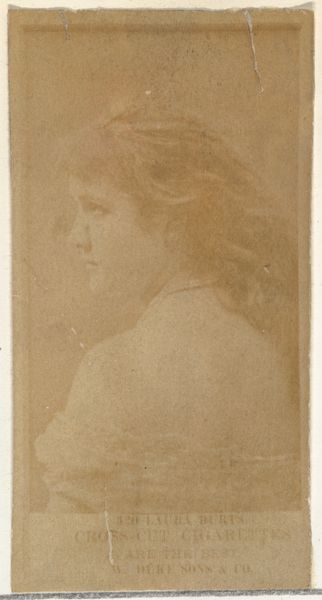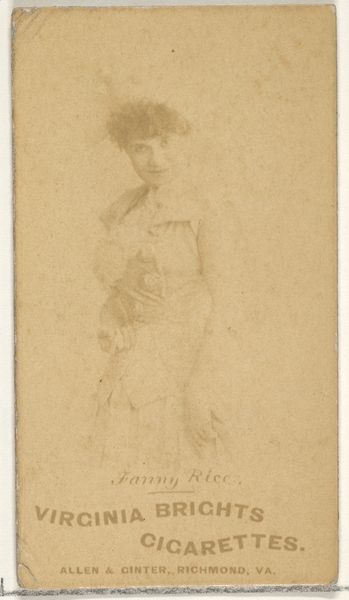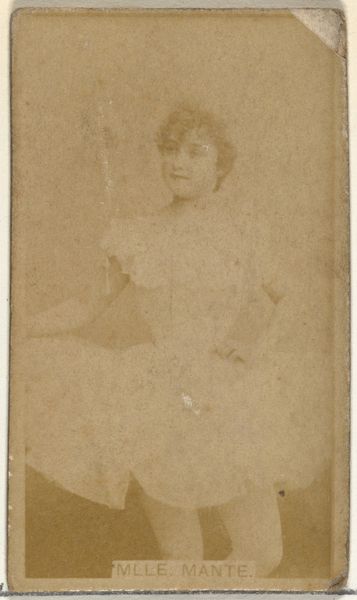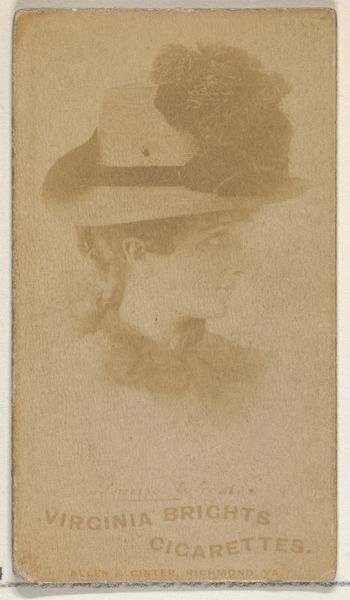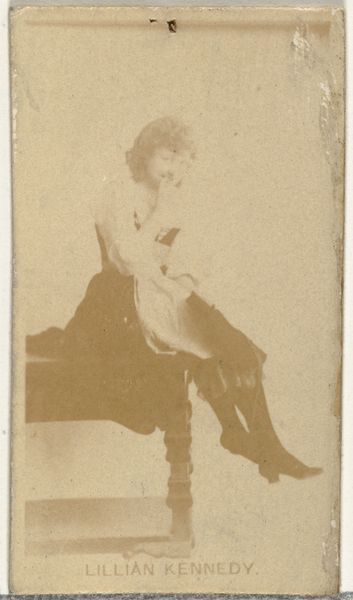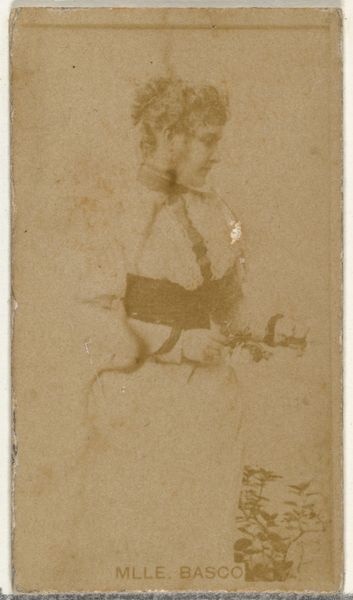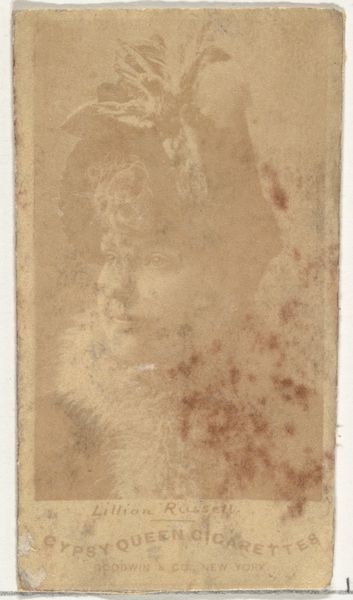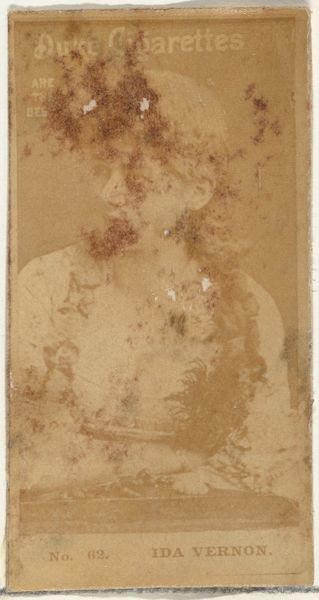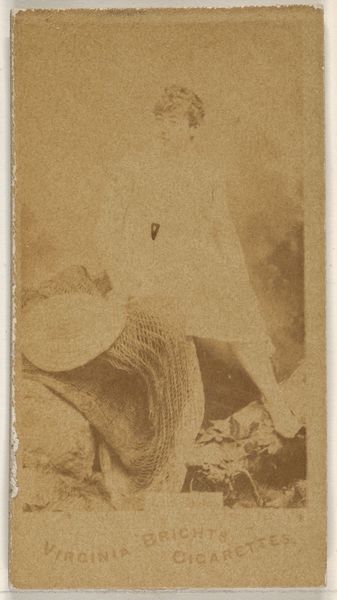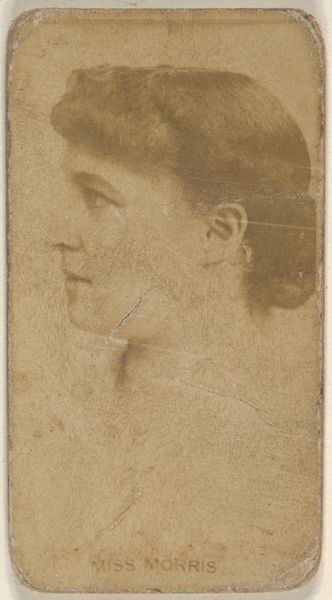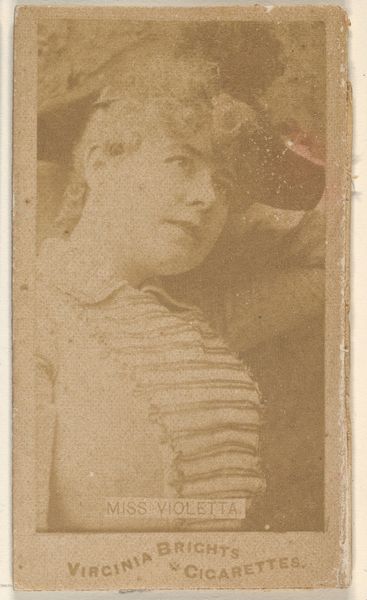
Card 706, from the Actors and Actresses series (N45, Type 5) for Virginia Brights Cigarettes 1885 - 1891
0:00
0:00
drawing, print, paper, photography
#
portrait
#
drawing
# print
#
paper
#
photography
#
coloured pencil
#
history-painting
Dimensions: Sheet: 2 3/4 x 1 3/8 in. (7 x 3.5 cm)
Copyright: Public Domain
Curator: This rather faded card is part of Allen & Ginter's "Actors and Actresses" series, dating from 1885 to 1891. It was originally included in packs of Virginia Brights Cigarettes. Editor: It's such a poignant little thing. It feels ghostly, like a half-remembered photograph salvaged from a dusty attic, whispering tales of a forgotten performer and a bygone era of casual tobacco consumption. Curator: Exactly. It reflects the period's fascination with celebrity and portraiture, capturing the likeness of a performer while also acting as an advertisement. Consider how tobacco cards served as pocket-sized galleries, accessible to a broad public. Editor: Right, a gallery interwoven with capitalism and commodity culture. This object really speaks volumes about the entanglement of entertainment, identity, and marketing during this historical moment. Who was this actress, and what kinds of roles was she allowed to portray, considering her gender, within the theatrical milieu of that time? Curator: Sadly, many of the performers featured in these cards are now unknown. They've become anonymous figures within a larger cultural spectacle. Editor: And yet, even in anonymity, the pose and presentation become deeply compelling when thinking about the construction of the feminine ideal and the performer's gaze for that moment in the Gilded Age. How did she understand herself as a "public figure" being used to market an addictive product? Curator: The medium itself is evocative. It's printed on paper, with a drawing made with coloured pencil, and utilizes photography; these cards are emblems of fleeting popularity, cheaply and quickly reproduced. Yet, this particular card shows wear, carrying its own unique history of handling, and of value accrued over time. Editor: That tension between mass production and the individualized aging of an object really gets to the heart of why material culture matters. A card like this helps us think critically about fame, gendered labor, and consumerism across centuries. It shows that objects—even these tiny cards—aren’t neutral; they're mirrors reflecting the biases and values of society back at us. Curator: Yes, I find myself returning to that notion of the "pocket gallery." Editor: Well, this small window onto another world leaves me eager to learn even more.
Comments
No comments
Be the first to comment and join the conversation on the ultimate creative platform.

